
Guests
- Juan Gonzálezco-host of Democracy Now!
- Bill Ayerslongtime Chicago activist, author and founding member of the Weather Underground.
The 2024 Democratic National Convention in Chicago, taking place against the backdrop of an unpopular war opposed by a growing number of voters, carries echoes of the 1968 DNC in the same city, when police violently attacked protesters calling for an end to the war in Vietnam. Much of the police riot unfolded on live national television, showing police, members of the National Guard and U.S. Army soldiers brutally assaulting and arresting protesters, many of them students. After four days and nights, more than 650 people were arrested and more than 1,100 injured. We look back on the infamous 1968 DNC with Bill Ayers, longtime Chicago activist, author and founding member of the Weather Underground, and Democracy Now! co-host Juan González. Both of them were in Chicago to take part in the protests. “It was really an eye-opening period for all of us who attended, who were out in the streets,” says González. “Chicago showed us what the crisis in the country was, the crisis of racism and white supremacy, the crisis of empire and war,” adds Ayers.
Transcript
AMY GOODMAN: This is Democracy Now!, democracynow.org, “War, Peace and the Presidency.” We’re “Breaking with Convention,” broadcasting from the studios of CAN TV here in Chicago. I’m Amy Goodman, with Juan González.
JUAN GONZÁLEZ: Well, as protesters prepare to march on the Democratic National Convention today, we look back to the 1968 DNC here in Chicago, when police violently attacked protesters calling for an end to the war in Vietnam. Much of the police riot unfolded on live national television.
The 1968 Democratic National Convention came in the middle of a year of mass protests against the Vietnam War. Those protests had also erupted in April when Martin Luther King Jr. was assassinated. Then, on June 5th, Robert Kennedy was killed as he sought the Democratic Party nomination for president.
Democrats had to select a nominee after Lyndon Johnson, President Johnson, announced he would not seek another term and amid fallout over Vietnam. His vice president, Hubert Humphrey, was ultimately nominated for president without competing in the primaries, after party bosses arranged for his support from most delegates.
AMY GOODMAN: Despite months of organizing that brought tens of thousands of people to Chicago during the DNC, Chicago refused to issue permits for almost any of the demonstrations. Instead, protesters were met by an estimated 24,000 police officers, Illinois national guardsmen who patrolled the streets with fixed bayonets, and 5,000 regular Army soldiers.
This is a clip from the documentary by Newsreel that captures the tension of the protests and how police escalated the situation on August 28th after someone lowered an American flag in Grant Park. The police, under apparent orders of then-Chicago Mayor Richard Daley, responded by tear-gassing and clubbing their way through a crowd of about 10,000 protesters.
UNIDENTIFIED: This rally is extraordinary. It began for us when one of our brothers, quite rightly, lowered an American flag to half-mast. No one since then has mentioned the rightness of his act. It followed with an unprovoked charge of the pigs into our space.
TOM HAYDEN: They’re not going to let us out of this park in any organized way. So, for the purposes of survival, you should move out. You should float out in small groups and do whatever you’re going to do outside of the park around the city. Don’t get trapped in some kind of large organized march, which can be surrounded. I’ll see you in the street.
UNIDENTIFIED: How long would it mean leaving these people alone?
POLICE OFFICER: We are not aware of the conversation that you’ve been holding here with Captain Green.
DAVID DELLINGER: This is a nonviolent march, that so far we are only on the sidewalk. We are not even on the street yet, although it is certainly our intention to march to the amphitheater in the street, because we think that the street is necessary to accommodate this many people. We’re stubborn bastards. We may be nonviolent, but we’re stubborn. And so, we are appealing publicly, through the press, through Deputy Commander Riordan —
POLICE OFFICER: There will be no march today.
DAVID DELLINGER: We’ve made very clear that you have no conflict with you.
POLICE OFFICER: The order is, sir, that there will be no march today.
UNIDENTIFIED: Be able to march on the sidewalk.
POLICE OFFICER: There will be no march today.
DAVID DELLINGER: Well, we’d like to have the reason so that it could be communicated to the world.
POLICE OFFICER: We will let you know at the proper time. But right now there will be no march.
UNIDENTIFIED: This is a legal walk.
POLICE OFFICER: There will be no march today!
JUAN GONZÁLEZ: On August 28th, the day Hubert Humphrey got the nomination for president at the DNC, police again brutally attacked protesters who had marched to the convention headquarters at the Conrad Hilton Hotel.
PROTESTERS: [bleep] you, LBJ! [bleep] you, LBJ! [bleep] you, LBJ!
UNIDENTIFIED: I take one look at the troops in Vietnam, I know what American foreign policy is about. America now, that’s America of the Democratic Party. Most of us here didn’t come to support McCarthy. Troops are out!
UNIDENTIFIED: The troops are out.
UNIDENTIFIED: Hey, don’t panic! Keep talking!
UNIDENTIFIED: Cool it! Cool it!
UNIDENTIFIED: Keep talking! Keep talking!
AMY GOODMAN: Those video clips come from Newsreel, which was in the streets of Chicago. After four days of protests outside the Democratic convention here in Chicago, more than 650 people were arrested, more than 1,100 were injured. Despite the police attacks, thousands headed back to their communities as reenergized and radicalized activists. This is the legendary activist, the late Tom Hayden, who helped organize the 1968 protests.
TOM HAYDEN: What we are battling for is not simply for an end to the war in Vietnam or to move these racist dogs out of the Black community. We are beginning to fight for our own survival. We came here. We fought. We did not run from the tear gas. We did not run from the bayonets. We stayed in the streets. And we did survive. And if we can survive here, we can survive in any local community in this country.
AMY GOODMAN: We are joined now by two people who were in the streets of Chicago in 1968: our own Juan González and Bill Ayers, longtime Chicago activist, retired education professor at University of Illinois at Chicago, author of many books. His book When Freedom Is the Question, Abolition Is the Answer is coming out in September. In 1968, Bill was arrested in Chicago during the DNC in front of the Hilton Hotel and held at Cook County Jail. At the time, he was a member of Students for a Democratic Society. He later helped form the Weather Underground and spent years living underground with his wife Bernardine Dohrn.
We welcome you, Bill, to Democracy Now! And, Juan, it is great to be with you here for the first time in years together, as we co-host every week, but to be together with you in your now town of Chicago. This was amazing, what took place in 1968. Why don’t you lay out for us how you got involved?
JUAN GONZÁLEZ: Yes, well, actually, you played the clip of Tom Hayden. It was Tom who convinced me to come to Chicago, because I didn’t think that the Democratic Party convention was worth the activists going to, because both parties, we felt back in those days, were capitalist parties that would not produce any progress for the American people. But I met Tom at a student convention again, because we had been at Columbia during the Columbia student strike there. And he told me, “Juan, we’ve got to go to Chicago. We have got to. The American people have to let the rest of the country, the leaders of the country know that the Vietnam War must end.” So I said, “OK, Tom, I’m not sure this is going to work, but I’ll go ahead.” And so, he was the one, actually, who recruited me to go, because I was not planning to at the time.
And I think it was really an eye-opening period for all of us who attended, who were out in the streets. And Bill can tell you, the number of different organizations and groups that participated in that protest was amazing. It was not only supported by the Panther Party and “Cha Cha” Jiménez and the Young Lords, but there were the Yippies, there were the McCarthy people, there were those of us in SDS. And maybe, Bill, you could talk about this strange coalition of folks that came together.
BILL AYERS: Yeah, when you say “the McCarthy people,” it’s the Eugene McCarthy people —
JUAN GONZÁLEZ: Eugene McCarthy.
BILL AYERS: — the peace, the “Clean for Gene” kids, who were there supporting a peace candidate who had run in the primaries, which Humphrey had not, and they came in support. And, of course, it’s interesting — Tom Hayden also organized us to come, because I was a regional traveler for SDS. I had been arrested, starting in 1965, maybe a dozen times by 1968. And we had organized. We had demonstrated. We had been activists in the street. And now was a time when Tom felt and others felt that we could make a coalition that would really show the whole world. And that’s why the slogan was “The whole world is watching,” because we wanted to project to the whole world that not only were there Americans who were against this; we wanted to educate Americans to the horror of the war and the reality of the political class having to meet behind police barricades.
AMY GOODMAN: And look at what you had just come out of. I mean, April 4th, 1968, Dr. Martin Luther King is assassinated in Memphis. Just two months later, you have Robert Kennedy, who defeats McCarthy in California, as he heads off the stage announcing they are moving on, what, to Chicago —
BILL AYERS: Yes.
AMY GOODMAN: — he is also gunned down. He was assassinated.
BILL AYERS: Right.
AMY GOODMAN: This is what you came out of.
BILL AYERS: Well, and for all those months, starting in January, the Tet Offensive in Vietnam, which proved that the Americans could not win the land war in Vietnam, and then Lyndon Johnson saying, “I won’t run for president,” the last day of March 1968. And we were ecstatic. We felt like three years of organizing and activism had worked, and we had now driven a president from office.
We weren’t happy long, because, as you say, five days later, Martin Luther King was assassinated, a couple months later Bobby Kennedy, and a few months after that, Henry Kissinger emerges from the swamp he was living in — I think it was Harvard — and he has a plan to extend the war. So, that was the reality we were facing. Every week the war went on, 6,000 Vietnamese were killed — every week, with no end in sight. So, the question was: What do you do? It was a crisis for democracy. It was a crisis for the antiwar movement. And we felt that we had escalate and bring the war home.
AMY GOODMAN: And talk about what Mayor Daley did. Let’s talk about the inside of the convention and the outside. What was taking place in both places? Start with Juan.
JUAN GONZÁLEZ: Well, Daley was, one, leading the Illinois delegation on the floor of the convention, while at the same time he was instituting a police state. Even many of the delegates at the convention said, “We’re in a” — the reporters, Dan Rather, Walter Cronkite, all of these people were saying, “This is a police state that we’re operating in here.” And so, he was playing both roles, as a political leader of the party, but more as the mayor of Chicago, creating a situation where — in essence, not goading, but leading the police in their attacks on the protesters.
BILL AYERS: And a year later, the Kerner Report — Governor Otto Kerner issued a report, mandated by the federal government, and they called it a police riot. And that’s indeed what it was. We had hoped to have a million people in the streets of Chicago. We failed miserably. And part of our failure was that Mayor Daley had made it very clear: If you come to Chicago, you will be hurt, you will be arrested. And it dampened the enthusiasm for the demonstration.
Interestingly, the impact was so great, I’ve never met anyone my age who wasn’t there. Now, that couldn’t possibly be true, but it felt true, because we were all there in spirit. And I think that that’s — the symbolic importance of it cannot be, you know, overestimated. It was huge.
AMY GOODMAN: Very interesting that the mayor today, that now you have protests that, well, didn’t look like they were going to be permitted, and people were talking about: Are there going to be parallels to 1968? You have a president who decides not to continue to run for reelection — Biden now, Johnson then. But at the very end, they have permitted these protests that are going to be taking place this week, Juan.
JUAN GONZÁLEZ: Yes. And according to the media reports, the mayor personally called some of the protest organizers and said that toward the end, when the police were refusing to give the permits, he said, “I’m going to get it done.” And so, he did use his office at least to allow the protests. Now we have to see how the police function, because, you know, political leaders don’t often control their police. I’ve learned that the hard way over many years of covering urban politics.
BILL AYERS: It’s true. They don’t.
JUAN GONZÁLEZ: You don’t always control the Army. And we have to see what happens now between the mayor and the police department in terms of how they handle these protests.
BILL AYERS: But it’s a significant difference to have a mayor who’s a labor organizer, who comes out of the movement, to honor and to name the moment, I think, correctly. But I also think it depends so much on what comes next. And we will see, but I’m confident that the expression of solidarity with the Palestinian people against this preannounced genocide will be heard loud and clear, inside and outside.
JUAN GONZÁLEZ: And, Bill, I’m wondering also what you think, because back then we had a problem even within SDS, that after the convention, many people were saying, “This election is not worth voting in,” and the result was, what we got was Richard Nixon and the law and order era that he ushered in. And I know that many of the protesters today are facing the same issue. After this convention, what do they do when the presidential election comes?
BILL AYERS: Well, I think that we overestimate sometimes the presidential election. Our job is to build an irresistible social movement. But it is also true that voting is not a Valentine. It’s a practical, tactical move. It’s not a moral question; it’s a practical question. And two things can be true at the same time. The lesser of two evils can be evil, and the lesser of two evils can be lesser. And so, recognizing all the contradictions in voting, it takes 15 minutes. You can be an activist for 365 days a year and vote for 15 minutes, and that is probably worth doing.
AMY GOODMAN: So, Bill, I want to go to Black Panther leader Bobby Seale. We have two clips. We’re going to talk about the trial in a second. But right now this is Bobby Seale speaking in Chicago during the ’68 DNC protests.
BOBBY SEALE: We go forth as human beings to remove these pigs, these hogs in the power structure, murdering and brutalizing people not only here in the confines of racist, decadent America, but murdering, brutalizing and oppressing people around the world. And when we go forth to deal with them, the devil always send out their racist, dirty, rotten pigs to occupy the people, to occupy the community, such as the way they have this park here occupied. Now, just a second. There’s a lesson that Minister of Defense Huey P. Newton teaches, that whenever the people disagree with the political decisions that have been made upon their heads, that whenever the people disagree with those political decisions, the racist power structure sends in guns and force to see that the people accept those political decisions. But we are here as revolutionaries to let them know that we refuse to accept those political decisions that maintain the oppression of our Black people and other people in the world.
AMY GOODMAN: That’s Black Panther leader Bobby Seale in 1968, later arrested for inciting a riot. In 2018, he appeared on Democracy Now! and talked about being gagged during the historic Chicago 8 trial.
BOBBY SEALE: So I argued in the courtroom every time. Every time my name was mentioned, I would jump up and interrupt the whole thing. “I object! My lawyer’s not here. He’s mentioning my name.” “Sit down, Mr. Seale!” the judge would say. And I would say, “No,” and I would argue. And then, I remember the judge one time says — he talked to the court recorder and asked her, “Did she get that?” [She] says, “Yes.” I said, “Did you get mine’s, too, ma’am?” She says, “Yes.” I says, “Thank you very much,” and then turn right back around and told the judge, “You’re a racist, a fascist and a bigot.” You know, so, that was the argument with me. And I run that all the way through. Ultimately, those contempt charges and everything was totally thrown out. In fact, everybody who was convicted — they even convicted the lawyers of contempt, etc., of us. But when it got to the higher circuit courts, higher circuit courts threw all that crap out. Judge Julius Hoffman violated all our rights.
And then the last day of gagging, I was bound up, my head. The only thing you could see is my eyes and my nose. I was bound up with ACE bandages. You know, the ACE bandage, you put them around the knees when you’re playing basketball and stuff, to tighten up the — that’s what I was — and then, right around here, all the arteries that’s going down. And they brought me in the courtroom. My arms are strapped down to the chair. My legs are strapped to the legs of the big heavy wooden chair, the last day of gagging. And when I got in, I mean, I was losing blood pressure, circulation. And it caused a big commotion in the room. And then the judge says, “Well, take him out.” And they tried to pick me up in this heavy chair, three guards. And the big guard started beating me in the head. Jerry Rubin jumped up out of his chair. Abbie jumped up out of their chair, trying to help me. Guards slammed them back in their chair. I’m trying to turn my hand over, my right hand over, to get my — to get my fingers up to the top of the gag. And then the other guard would turn my hand down and then hit me and knock me back, you know, and stuff like that. They really brutalized me.
AMY GOODMAN: So, that’s former Black Panther leader Bobby Seale speaking on Democracy Now! in 2018 with Juan and me, talking about the Chicago 8 trial. As we begin to wrap up this segment, Bill, the significance of this trial?
BILL AYERS: Well, I think the significance of the events in ’68, the trial later, really show us what — Chicago showed us what the crisis in the country was, the crisis of racism and white supremacy, the crisis of empire and war. And it was just demonstrated. It was laid out, and it was so perfectly kind of on display that no one could avoid it. And so, for Bobby Seale to be gagged and dragged off, with his seven white comrades sitting there, and with people like Dave Dellinger with the courage to stand up and fight that, I think it was a remarkable —
AMY GOODMAN: Abbie Hoffman, Jerry Rubin.
BILL AYERS: All of them.
AMY GOODMAN: The judge, Julius Hoffman, you said, no relation to Abbie Hoffman.
BILL AYERS: Right.
AMY GOODMAN: And what did Abbie Hoffman say? No one ever feared there anyone —
BILL AYERS: Yeah, exactly.
AMY GOODMAN: No one ever thought there was any relation.
BILL AYERS: Exactly. But it was an important statement to the country and to the world that we had these contradictions. And as you pointed out, it’s not that history repeats itself, but the contradictions have not gone away. White supremacy abides. War and empire and genocide abide. And we have to stand up against them. Our task today is very similar. We have to end this system of oppression. And that was a great moment of showing the world what it looks like.
AMY GOODMAN: And talk about what happened afterwards. What happened with the trial, Bobby Seale gagged to a chair, tied up?
BILL AYERS: And eventually, they were — you know, the trial was seen as an atrocity, and Judge Hoffman was seen as some troglodyte from a former era who was trying to suppress justice, not serve justice.
AMY GOODMAN: Well, Bill Ayers, we want to thank you for being with us, in your hometown of Chicago. Your new book, coming out in September, When Freedom Is the Question, Abolition Is the Answer. Bill Ayers, a longtime Chicago activist, retired education professor at the University of Illinois Chicago. I want to thank you for being with us.
BILL AYERS: Thank you very much.

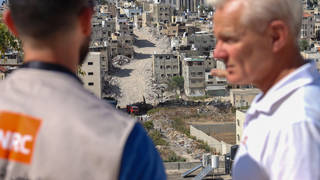
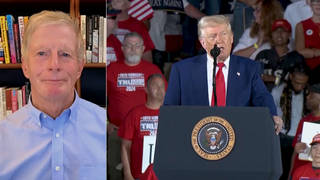
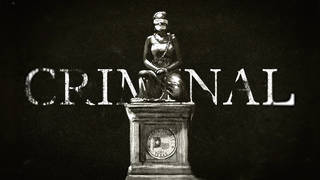
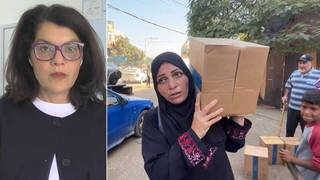





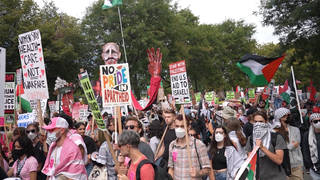
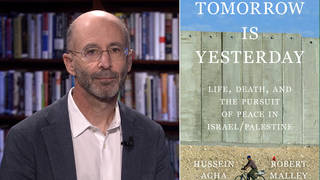
Media Options